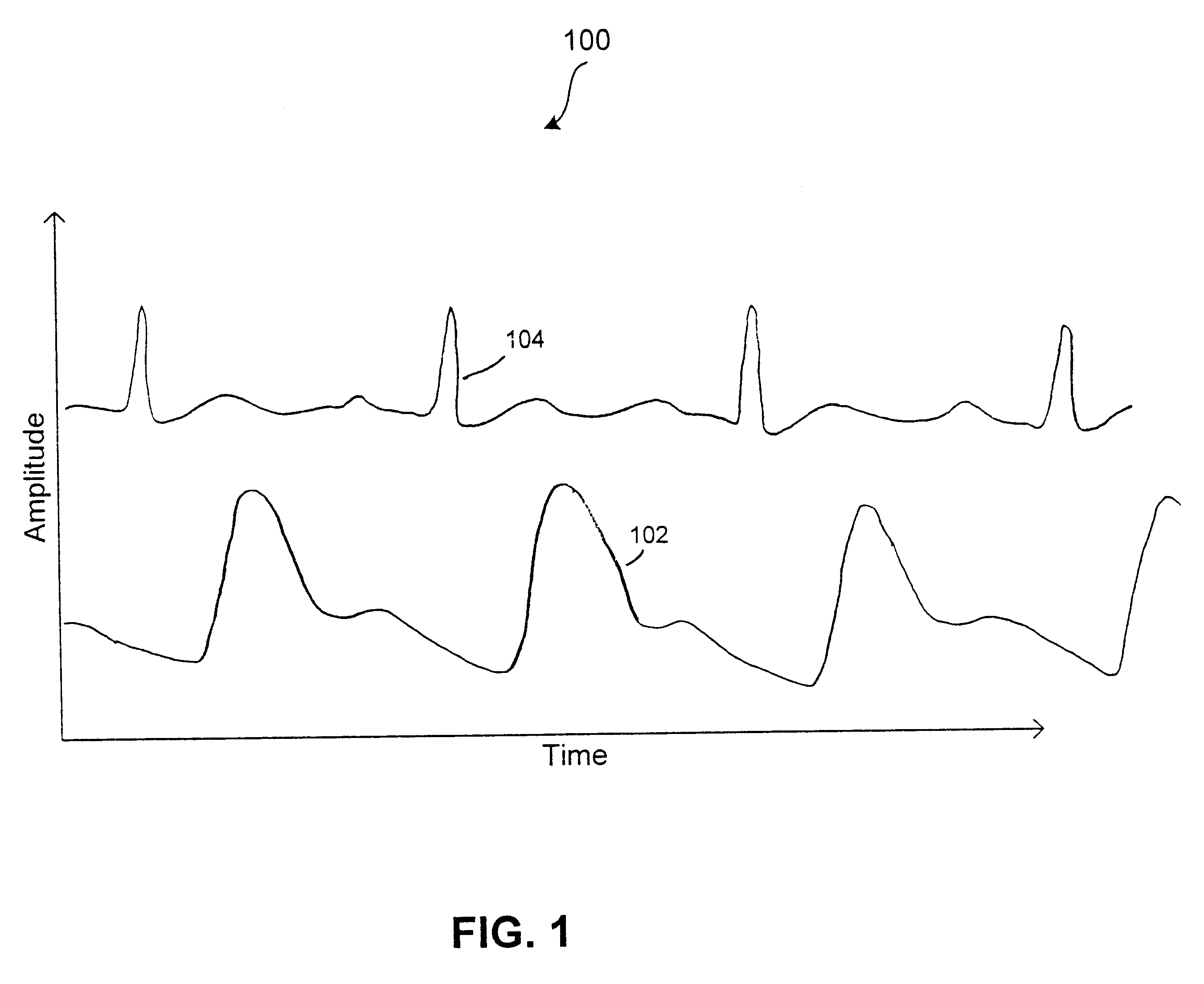Methods and devices for vascular plethysmography via modulation of source intensity
a plethysmography and source intensity technology, applied in the field of noninvasive and implantable (i. e., invasive) plethysmography methods and devices, can solve the problems of poor volume change measurement, low accuracy, and inability to accurately measure the volume of the plethysmography, so as to achieve the effect of minimizing the differen
- Summary
- Abstract
- Description
- Claims
- Application Information
AI Technical Summary
Benefits of technology
Problems solved by technology
Method used
Image
Examples
Embodiment Construction
The following description is of the best modes presently contemplated for practicing the invention. This description is not to be taken in a limiting sense but is made merely for the purpose of describing the general principles of the invention. The scope of the invention should be ascertained with reference to the claims. In the description of the invention that follows, like numerals or reference designators will be used to refer to like parts or elements throughout.
I. Overview of Present Invention
Instead of providing a constant source of optical power (e.g., a light source having a constant intensity) and using a time-varying detected signal as the plethysmography signal (i.e., the information signal), the present invention adjusts the source of optical power such that a relatively constant average light intensity is detected at a light detector. The time-varying modulating signal (i.e., that controls the source power) is used as the plethysmography signal (i.e., the information ...
PUM
 Login to View More
Login to View More Abstract
Description
Claims
Application Information
 Login to View More
Login to View More - R&D
- Intellectual Property
- Life Sciences
- Materials
- Tech Scout
- Unparalleled Data Quality
- Higher Quality Content
- 60% Fewer Hallucinations
Browse by: Latest US Patents, China's latest patents, Technical Efficacy Thesaurus, Application Domain, Technology Topic, Popular Technical Reports.
© 2025 PatSnap. All rights reserved.Legal|Privacy policy|Modern Slavery Act Transparency Statement|Sitemap|About US| Contact US: help@patsnap.com



